Southern Svalbard aerial photosFlights from Tromsř to Longyearbyen give splendid views of southern Spitsbergen on the rare occasions that the weather is clear. The route passes close to Bjřrnřya (rarely seen), before crossing the South Spitsbergen coast at Sřrkapp. The aircraft then takes a variety of routes, sometimes up the west coast, sometimes across the middle of the island. Much of the terrain is glacierized, with a selection of surge-type glaciers on view. Only on the approach to Longyearbyen is the terrain relatively ice-free, this area being a lower, dissected plateau. |
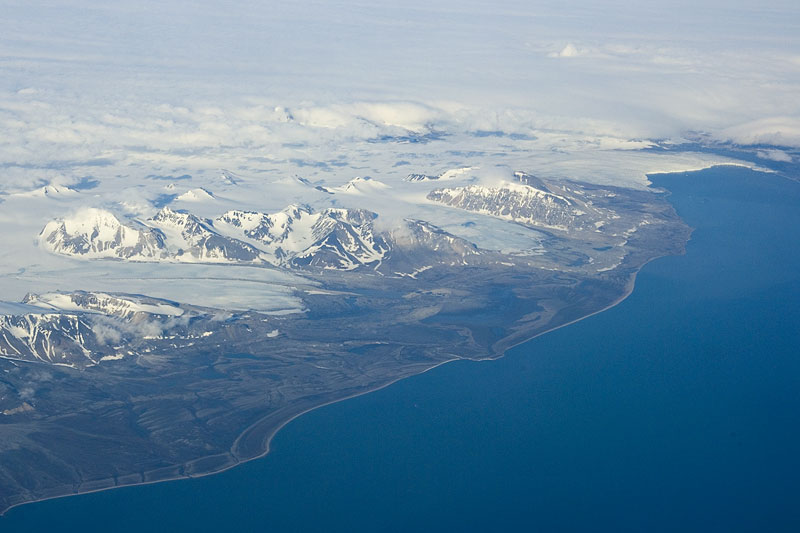 Outlet glaciers from the highland icefield over Sřrkapp Land, with Bungebreen on left and Oslokbreen, the tidewater glacier on the right; 2009. (JA) | 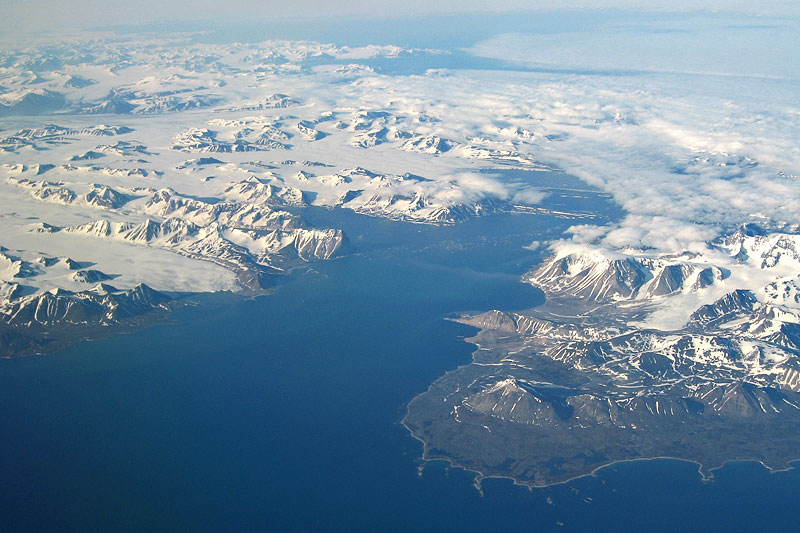 Wide-angle view of the glaciers and icefields surrounding Hornsund in SW Spitsbergen. In the foreground is a coastal plain that characterises much of western Spitsberegen, known as the "strandflat"; 2009. (MH) | 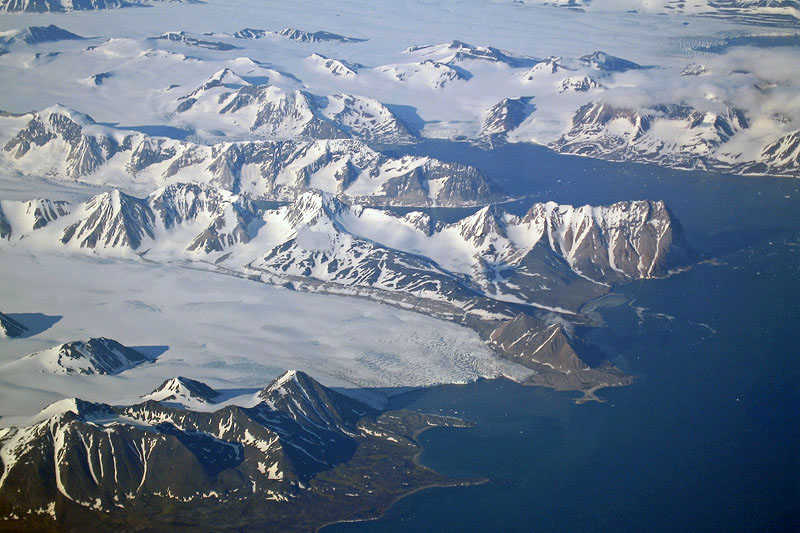 Zooming in on the north coast of Hornsund. The tidewater glacier in the foreground is Hansbreen. In the small bay in front of the snout is the Polish Research Station; 2009. (MH) | 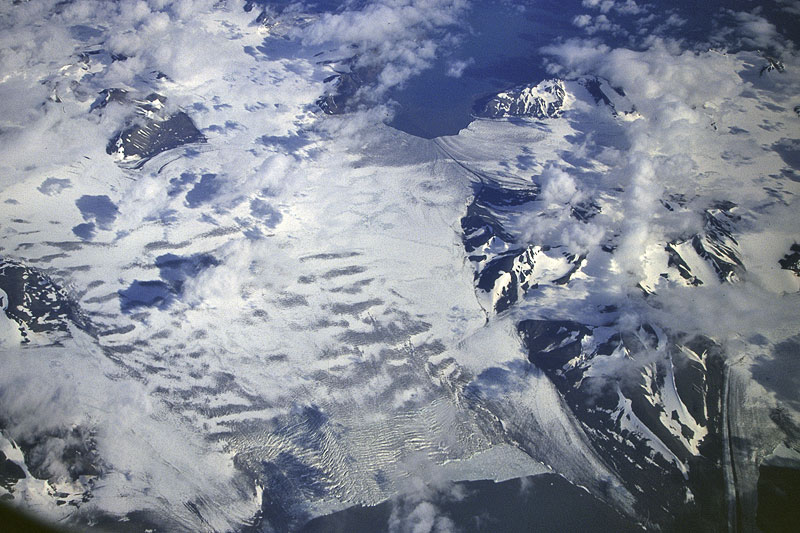 Hornbreen, a composite glacier and icefield that drains into both Hambergbukta on the SE coast of Spitsbergen (background) and Hornsund; 2000. (MH) |
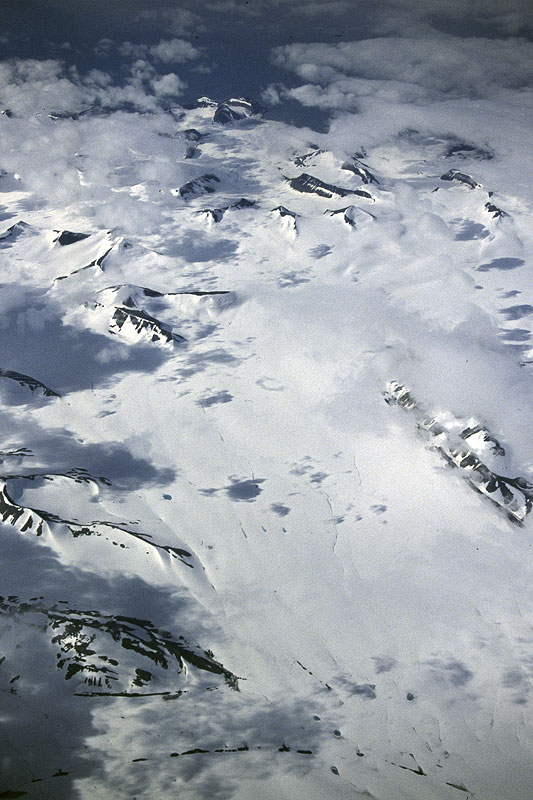 Highland icefield in southern Spitsbergen, draining towards both east and west coasts. Melt-pools are forming on the glacier surface in this early summer 2000 view. (MH) | 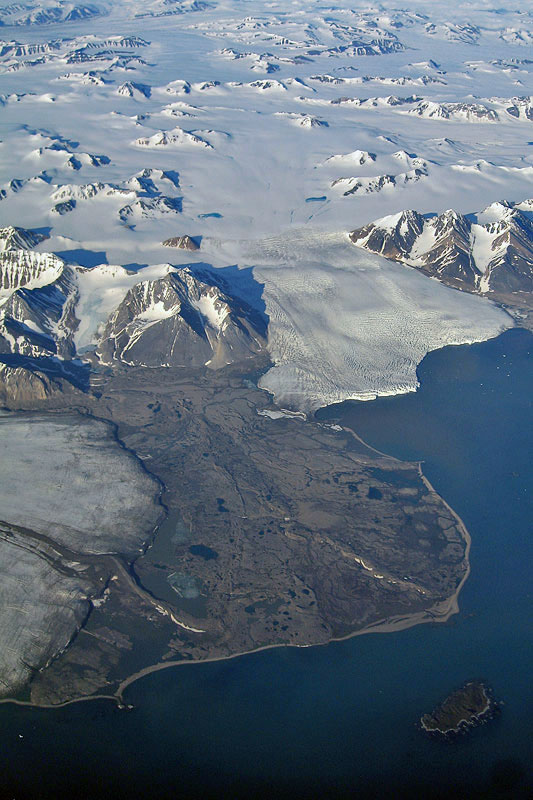 The proglacial area between Vestre Torellbreen (lower left) and Austre Torellbreen (middle), showing extensive moraines, dead-ice topography with kettle lakes and coastal beaches and lagoons; 2009. (MH) | 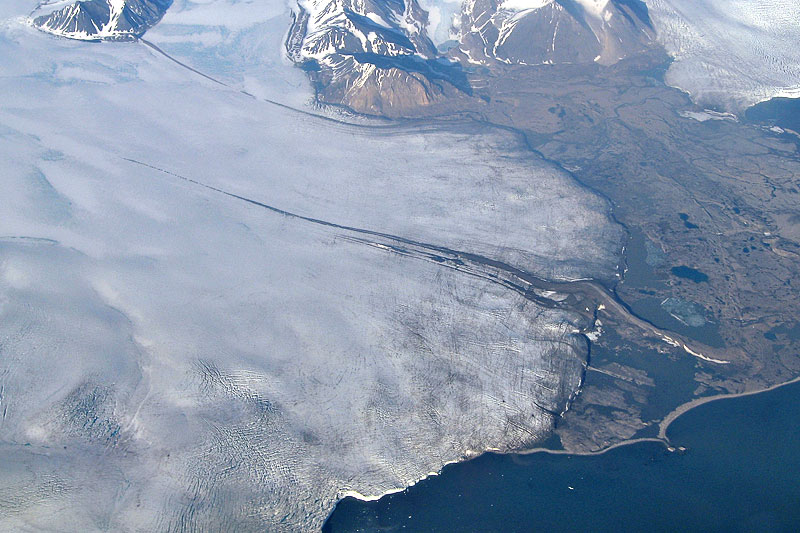 Medial moraines (with extension onto proglacial area) of Vestre Torellbreen in 2009. (MH) | 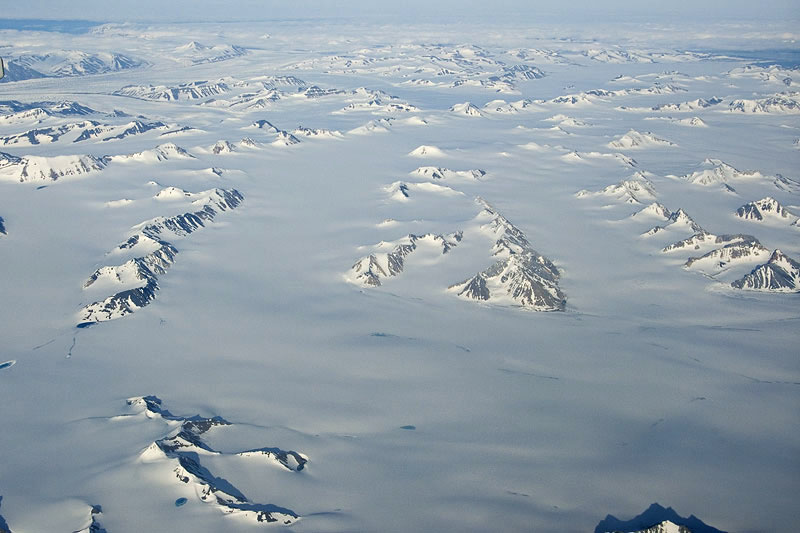 Looking southeast across the highland icefields of Wedel Jarlsberg Land, with ranges of mountains projecting through the ice; 2009. (JA) |
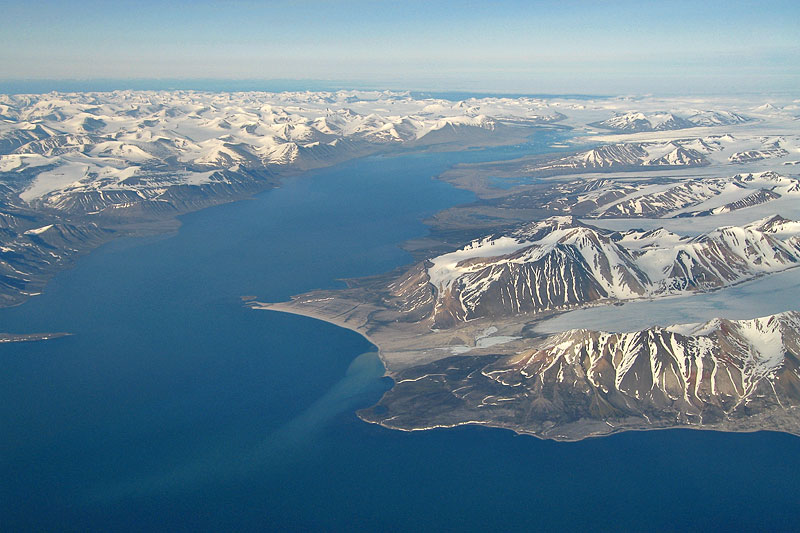 Van Keulenfjord is one of the major fjords that almost split the island of Spitsbergen. It was a major discharge route for ice from the Barents Ice Sheet, which lay to the east during the last ice age; 2009. (MH) | 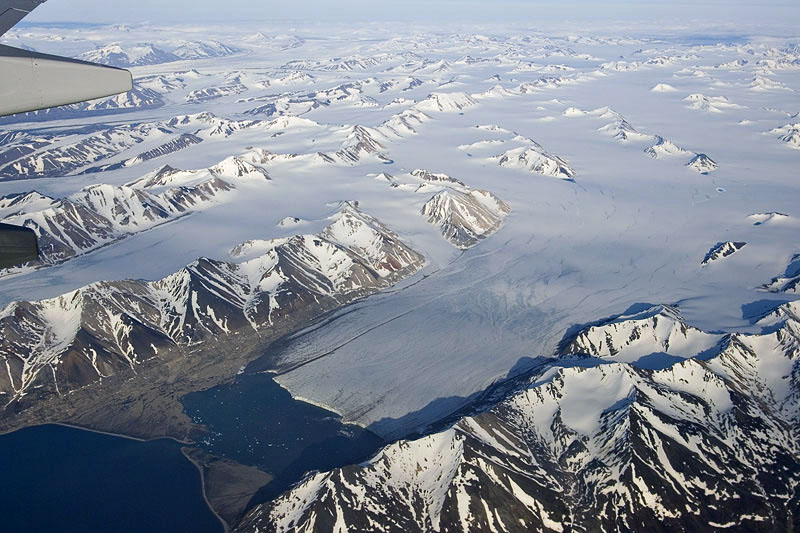 Récherchebreen, a large tidewater glacier draining the icefields of Wedel Jarlsberg Land and flowing into Récherchefjorden, a southern branch of Bellsund; 2009. (JA) | 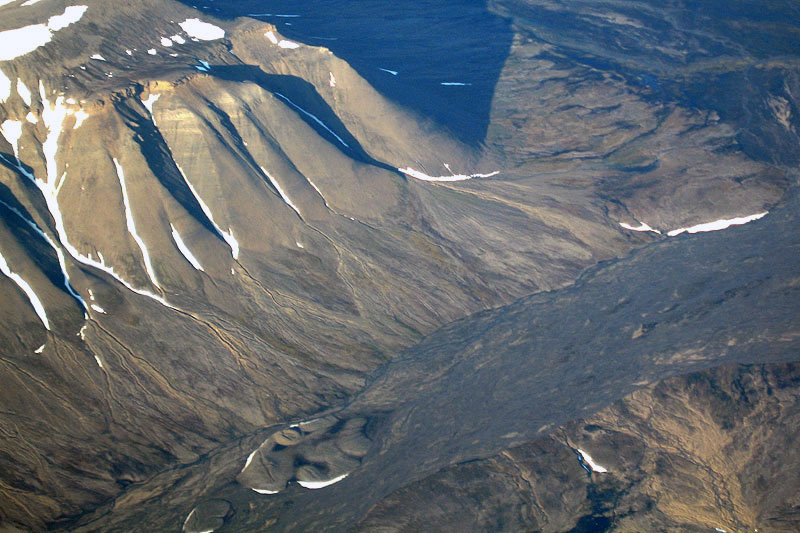 Pingos (ground ice intrusions) on the flood plain of a braided river in central Spitsbergen; 2009. (MH) | 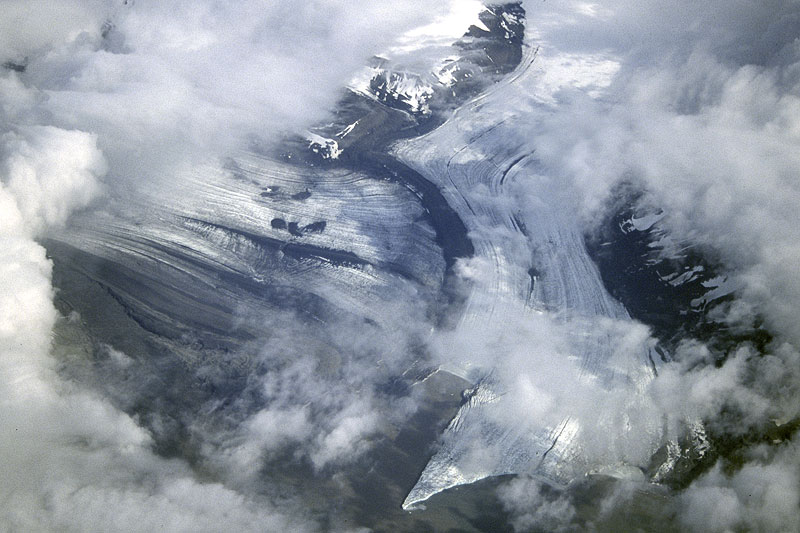 Glimpse through the clouds of two converging surge-type glaciers in their quiescent state in SE Spitsbergen in 2000. (MH). |
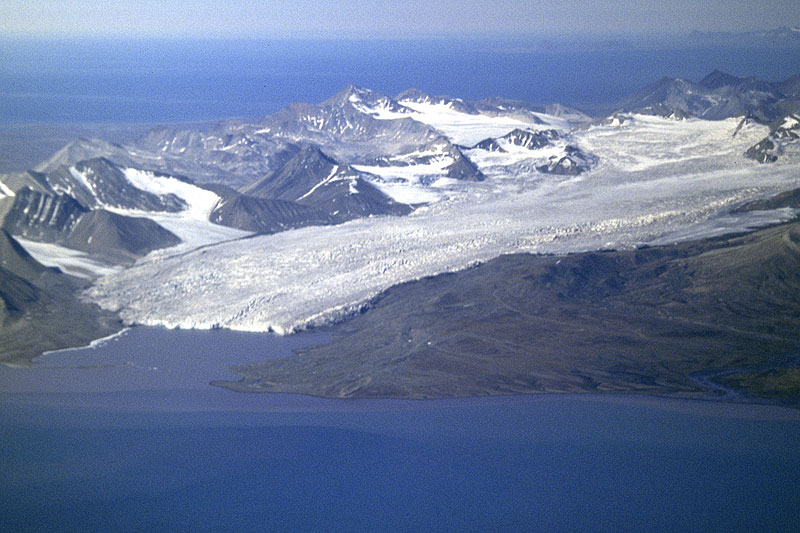 Fridtjovbreen in 1999, near its maximum advance position following a long period of surging during the 1990s. (MH) | 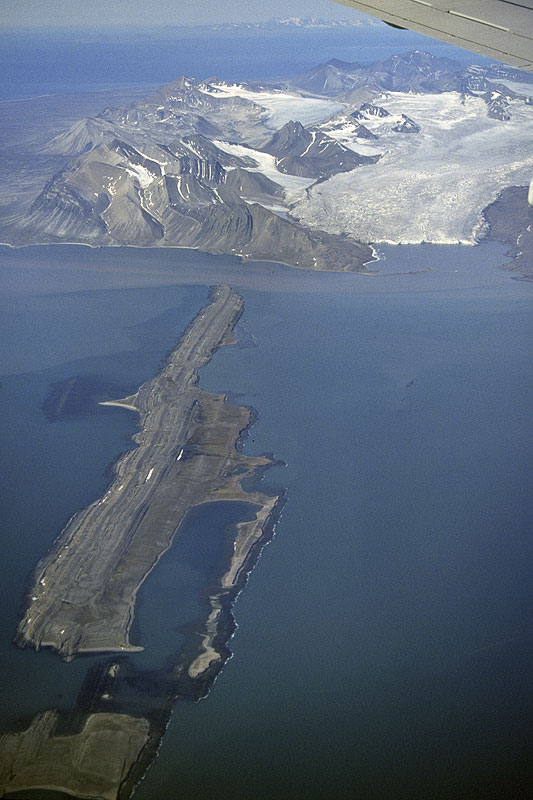 Fridtjovbreen in 1999, with the island of Akselřya, a resistant band of Permian chert which forms a long thin barrier across the mouth of Van Mijenfjorden. (MH) | 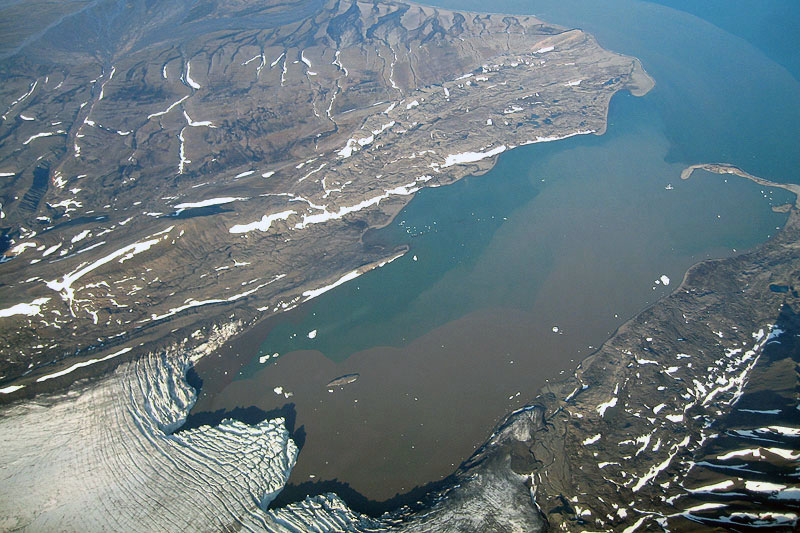 The terminus of Fridtjovbreen in 2009, nearly a decade after the surge, showing rapid recession through calving. A large sediment plume emanates from the terminus, and dead ice is stranded along the moraine-draped flanks of the bay. (MH) | 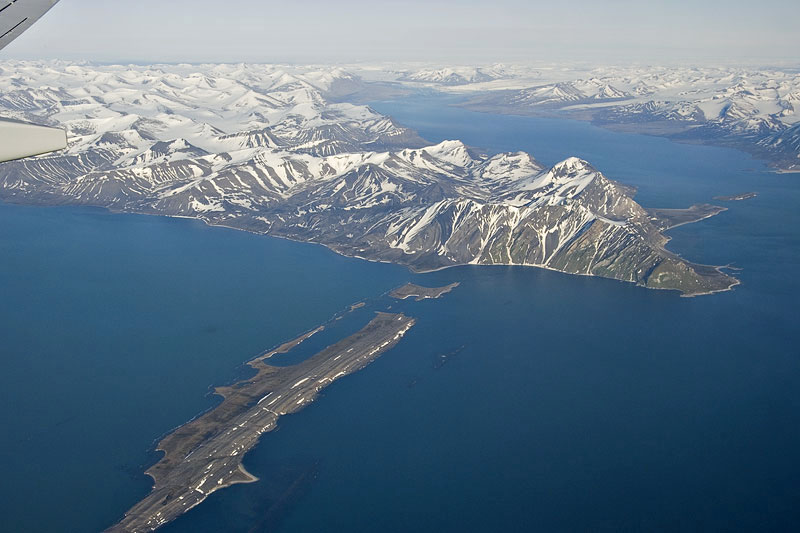 Another view of Akselřya, looking SE to the snow-streaked hills of Nathorst Land; 2009. (JA) |
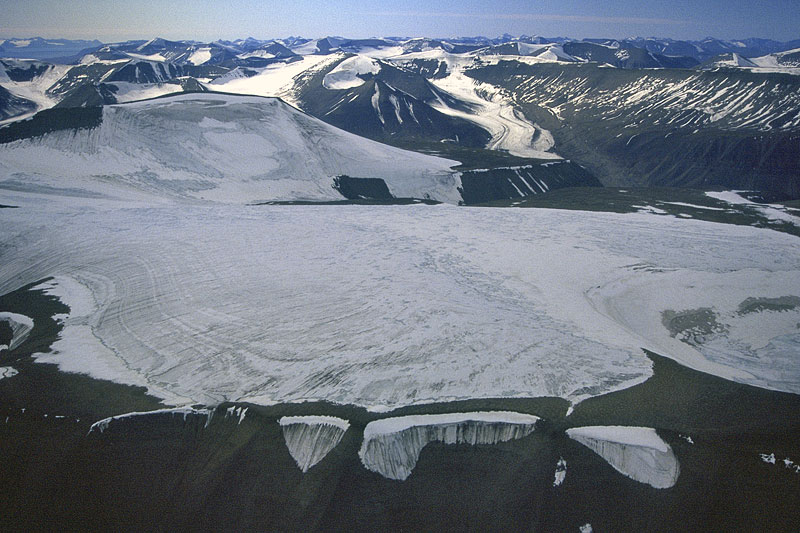 Decaying ice cap in south-central Spitsbergen. Nearly all the winter snow has melted, revealing stratification in the ice and firn. There remains little accumulation to sustain the ice cap in this 1999 photograph. (MH) | 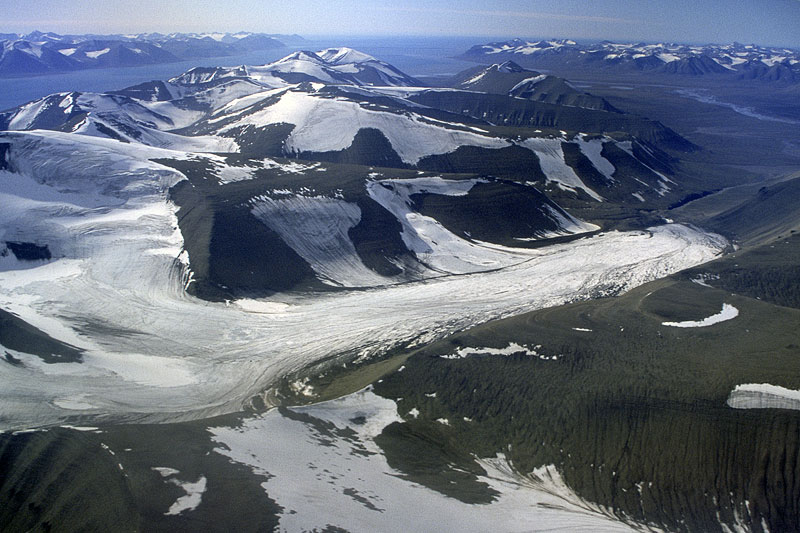 Rapidly decaying valley glacier in Nordenskiöld Land; Reindalen and Van Mijenfjorden in background, 1999. (MH) | 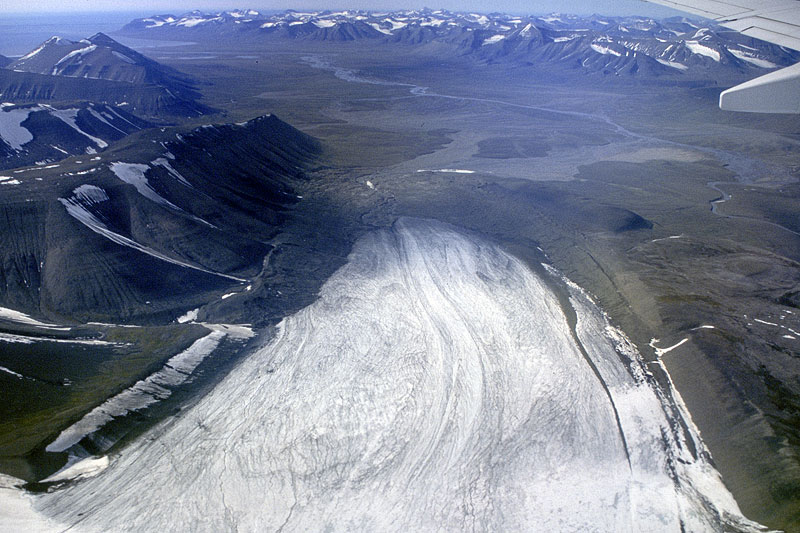 Snout of same valley glacier showing folded stratification and longitudinal foliation draining into Reindalen, 1999. (MH) | 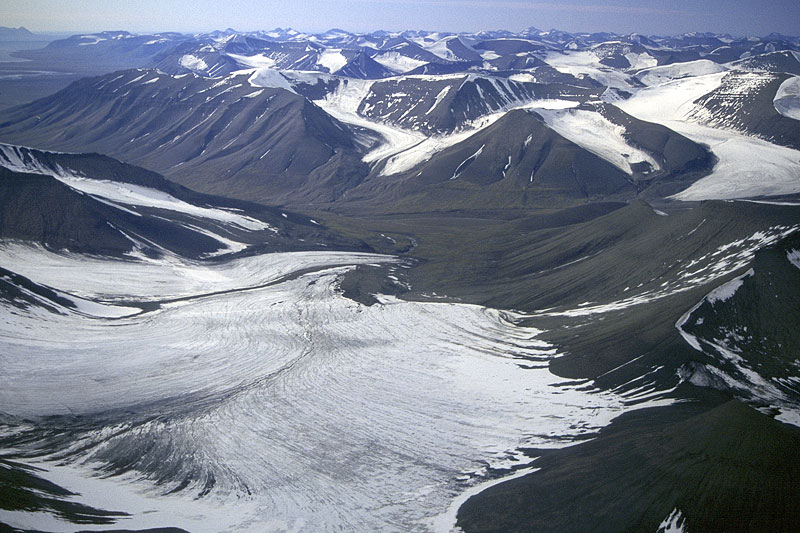 Various decaying cirque and valley glaciers in central Nordenskiöld Land, 1999. (MH) |
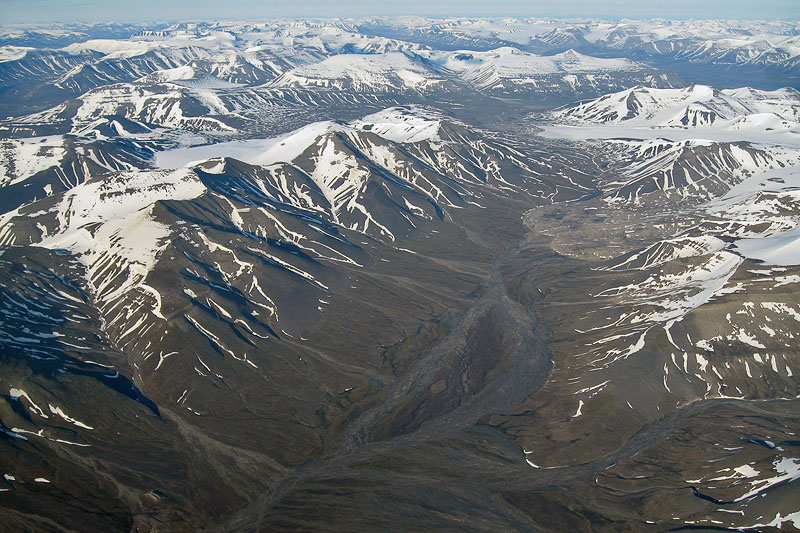 The central belt of Mesozoic rocks in central Spitsbergen, where Longyearbyen is located, is lower than much of the island, so glaciers are less well developed. Nevertheless, they were carved out by glaciers during the last ice age, such as Grřndalen in this picture; 2009. (MH) | 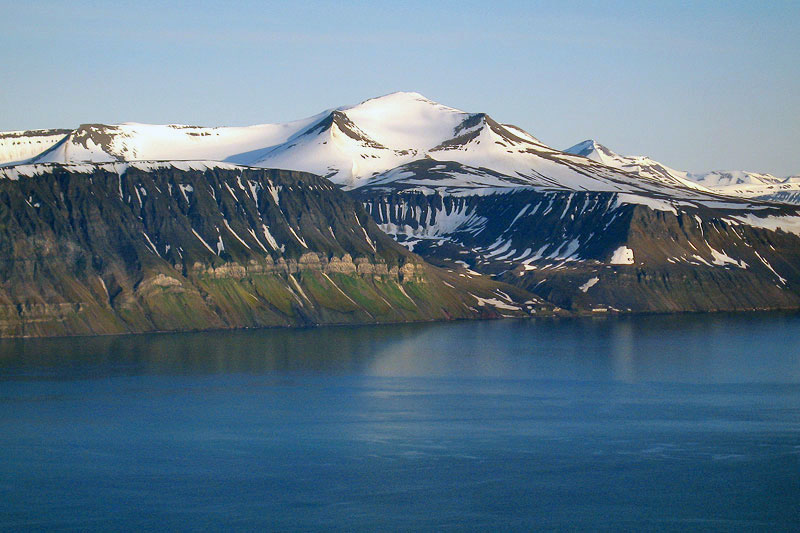 Approaching Longyearbyen Airport, the aircraft passes the Palaeogene coal-bearing cliffs in the vicinity of the former settlement of Colesbukta. Nesting birds (especially little auks) fertilise the scree slopes below the cliffs, giving rise to lush mosses, grasses and flowering plants; 2009. (MH) | | |
|